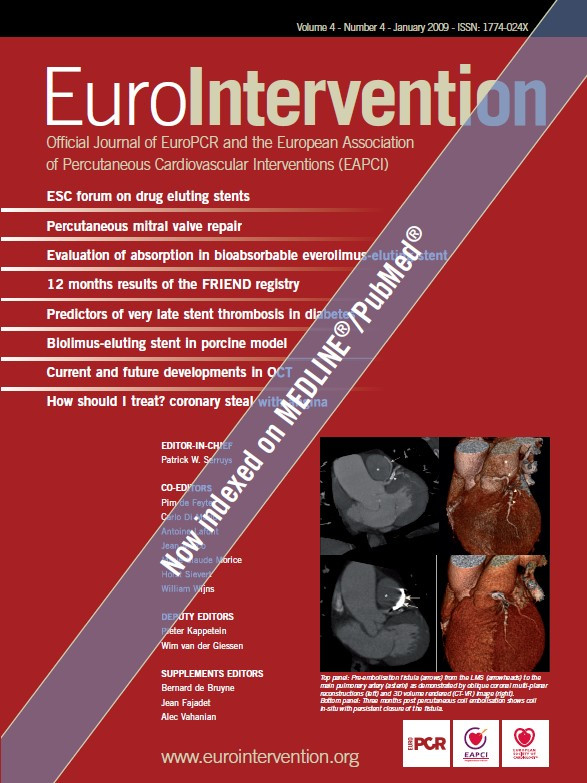Dear Colleagues,
Our years of work, of steady collaboration and communications, has now been recognised, and our journal – your journal – EuroIntervention has been accepted for indexing by MEDLINE/PUBMED. As we search for information on the web, as we prepare our publications and our submissions, we perhaps have taken for granted this simple act of recognition, and yet it represents an objective judgment of what we are up to, as well as an invaluable tool for the future. We are proud of this achievement, but aware at the same time that our work has only just begun.
We have learned that during recent this review period we were one of 143 titles being considered from throughout the world. The review took place at the United States department of Health and Human Services, the National Institutes of Health, at the National Library of Medicine in Bethesda, Maryland by a committee of 19 members of the Literature Selection Technical Review Committee. The final process itself took over two days, and we have been accepted before JACC Intervention / Circulation intervention, who, as you know, are younger publications in our field.
New commitments
So now is the time to commit ourselves again. Commit ourselves to an increased publication schedule of 6 times a year. Commit ourselves to an expediated review process. Commit ourselves to a stringent acceptance policy based on the highest standards of peer review. Commit ourselves to fulfilling our next goal: an indexing factor that we can all be proud of.
This year begins with underlining the increasing and close collaboration between the European Heart Journal team and EuroIntervention. This is something we have spoken about before, and is due in great part to the warm support of our friend Thomas Lüscher and his team in Zurich. This seemingly natural and mutually beneficial situation can be witnessed by the recent online joint publication of the ESC/DES Task Force paper focusing on “The worldwide discussion on the long-term safety and efficacy of DES whose overall goal is to provide general recommendations to the medical community for the use, clinical development, and future assessment of DES” which is still available on our website.
Collaboration has always been one of the foundations of our work, and emerging technologies and techniques figure strongly within the pages of our journal. Work in structural heart disease will be augmented under the editorial direction of such names as Carlos Ruiz, Philip Bonhoeffer, Peter de Jaegere and with the support of Alex Vahanian (also Supplements Editor of EIJ) – who, I am sure you will agree – are well placed to help us focus better on these fast changing subjects.
And this issue will offer much more, here in print, but online as well. Paper such as Howard Hermann’s on “percutaneous mitral valve repair” or one on “bioabsorbable stents” by Hector Garcia-Garcia, as well as the above mentioned joint publication with the EuroHeart Journal, the “ESC forum on drug eluting stents” by Joost Daemen et al. Our “hands-on” section with a twist, “How Should I Treat” will be dealing with the issue of coronary steal with unstable angina secondary to a coronary artery fistula presented by Rohit Khurana, with expert commentaries by Ad Bogers and Shakeel Qureshi.
We will always try to remain true to the trust you place in us, by your submissions, by your loyal readership... and we are committed to evolving with the highest standards that you, and now the world, have come to expect.

